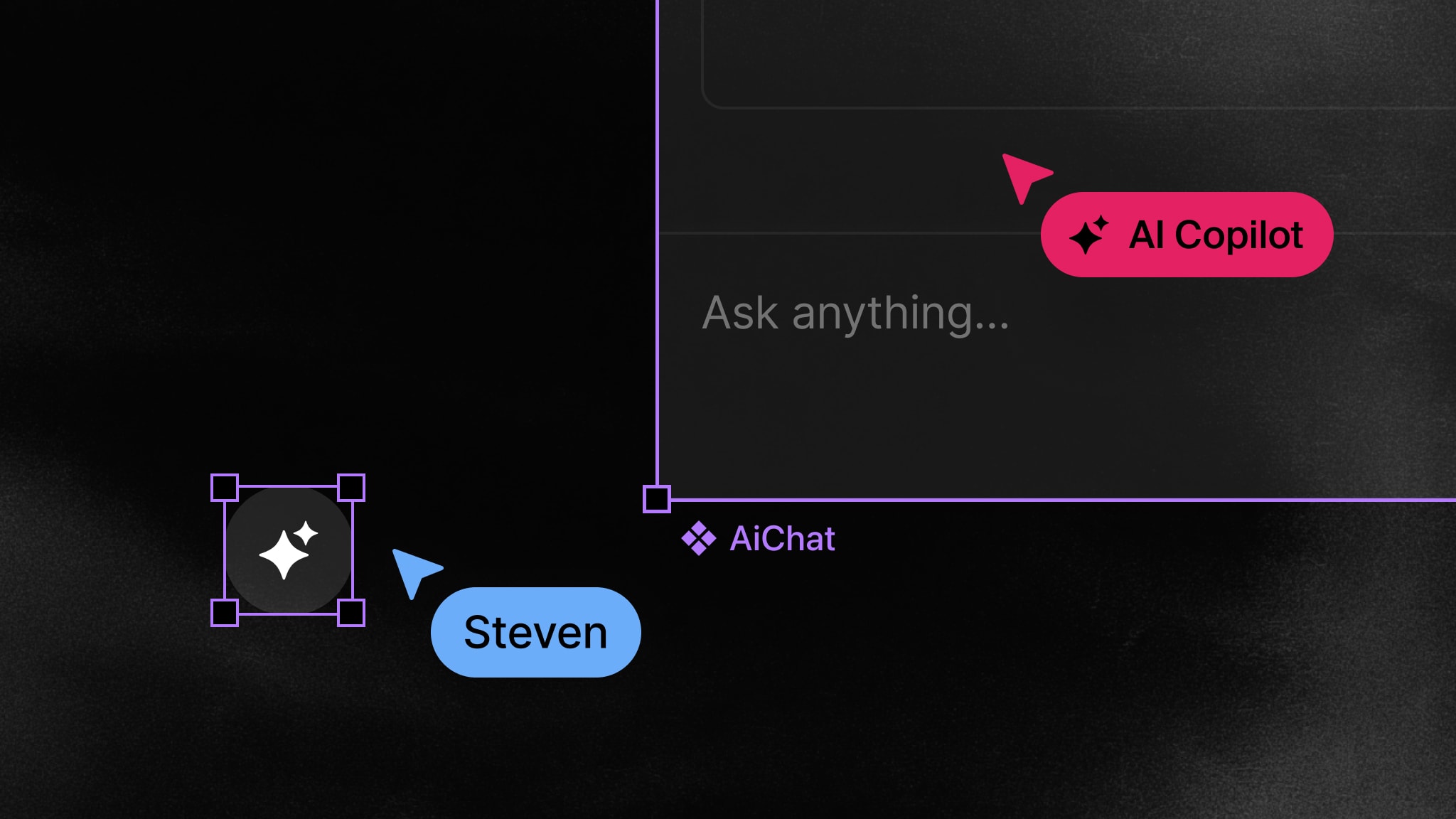Great agent experience starts with great collaboration
Agent-compatible collaborative apps will have a huge competitive advantage. In this post, I break down why great agent experience (AX) starts with great collaborative products.

A couple of days ago, Mathias Biilmann, CEO of Netlify, published a blog post introducing the term agent experience (AX). The concept resonated deeply with me because it aligns with my vision for the future of collaboration. I’d like to share my thoughts on this and why I believe it’s crucial for product leaders to start thinking about agent experience today.
The new experience layer: agent experience
At Liveblocks, and for a few other DevTools companies that ship UI components, we’ve always had to focus on two key experiences:
- User experience (UX): Designing seamless, intuitive, and delightful interactions for people.
- Developer experience (DX): Ensuring that developers can easily integrate, extend, and maintain powerful capabilities in their products.
Now, we’re entering a new era—one where agent experience (AX) is just as critical. The way AI agents interact with software will define the next generation of product design. And the key insight is this: UX, DX, and AX are intertwined—each one’s success relies on the strength of the others.
Collaboration is essential for AI agents
Making your product collaborative like Figma or Google Docs isn’t just beneficial for humans—it also enhances the effectiveness of AI agents. When a product is built with collaboration at its core, agents can operate more transparently, efficiently, and predictably with features like collaborative editing, presence indicators, comments, and notifications.




To understand how to build great agent experiences for your product, it’s important to understand the ways AI agents can interact with your product. To me there are two distinct but related ways: internal and external agents. And while there are overlaps between the two, each requires a different approach.
External AI Agents
External agents are AI systems that interact with a product from the outside, mimicking human behavior. These agents will browse the web, navigate interfaces, and execute workflows on behalf of a person. A great example of this is OpenAI Operator, which interacts with web-based apps autonomously. But for this to work well, the product must be designed to be agent-compatible and collaborative by default—meaning that:
- User interfaces and workflows must be predictable and structured so agents can understand how to take meaningful actions.
- Structured metadata must be used to help AI agents understand content and intent within the app.
- Users should be able to see AI performing tasks inside the UI in realtime. Features like live cursors, realtime updates, and multiplayer editing make these actions visible, ensuring transparency and seamless interaction between AI and human users.
If a product isn’t built with collaboration at its core, both external AI agents and human users will struggle to use it effectively. Poor AX leads to poor UX, making the overall experience frustrating and inefficient.
Aaron Levie, Box CEO, using OpenAI Operator to watch a live video feed and noting every time it sees a black vehicle in the stream.
Internal AI Agents
Internal agents, often referred to as copilots, are AI assistants embedded directly within a product. Unlike external agents, they collaborate with users in realtime, providing assistance and taking actions within the product. For these agents to be truly effective, they need to capture and understand user intent based on the application’s state and content—meaning that:
- Users should be able to ask for help and get relevant contextual and actionable responses within the product, not just a bolted-on chatbot experience.
- AI should be able to execute tasks based on a specification listing available actions and their corresponding APIs—enabling AI agents to understand how to operate effectively within the product.
Michaël Villar, Height CEO, shared a demo of an AI agent working in the product directly alongside him. The realtime updates and presence indicators make it feel like any other teammate.
Why this matters for every product leader
Agent-compatible collaborative apps aren’t just a nice-to-have—they’re quickly becoming a necessity. Companies that fail to embrace this shift will struggle to keep up. Products that aren’t built for realtime, transparent collaboration will get disrupted.
At Liveblocks, we’ve been ahead of this curve:
- We already enable Figma-like realtime collaboration in any product, making apps naturally compatible with external AI agents.
- We’re now working on pre-built React components for human-to-bot collaboration, making it easy to integrate AI copilots into any product with the best possible user, developer, and agent experience.
If you’re building software today, the question isn’t if you need to make your product agent-compatible—it’s how fast you can make it happen.
Ready to get started?
Join thousands of companies using Liveblocks ready‑made collaborative features to drive growth in their products.


